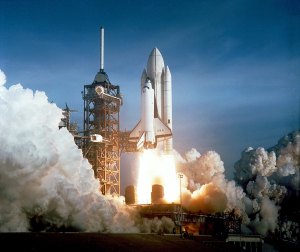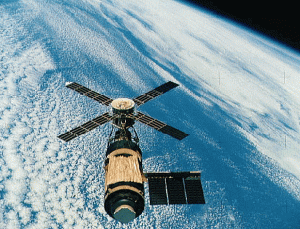![]()
![]() The first manned missions to outer space by both the United States and former USSR in 1961 were short trips that last no longer than two hours. However, the former USSR went on to complete a few missions that lasted more than 24 hours before the US completed its first 24-hour space flight in 1963. The increasing durations of the space flights by both the American astronauts and Soviet cosmonauts make one thing very clear: at some point, the crew must eat.
The first manned missions to outer space by both the United States and former USSR in 1961 were short trips that last no longer than two hours. However, the former USSR went on to complete a few missions that lasted more than 24 hours before the US completed its first 24-hour space flight in 1963. The increasing durations of the space flights by both the American astronauts and Soviet cosmonauts make one thing very clear: at some point, the crew must eat.
The first food delivery systems were, of all things, tubes. They had the look and feel of a tube of toothpaste, but what came out of these tubes was anything but minty. The former USSR’s Yuri Gagarin, who in 1961 became both the first human to travel into space and the first to orbit the earth, dined on three 160 g toothpaste-type tubes: two servings of puréed meat and one chocolate sauce. The combined crew of the Apollo-Soyuz Test Project (1975) ate tubes of borscht and caviar, along with canned beef tongue and packaged Riga bread.
While NASA effectively borrowed the food tube idea from the Russians, they also experimented with their own delivery system: bite-sized cubes with gelatin coatings to prevent crumbs. During Project Mercury (1959-63) and Project Gemini (1965-66), foods were dehydrated before missions and rehydrated once in space, allowing the menu to expand over time to include the astronauts’ preferences. Items such as shrimp cocktail, chicken and vegetables, toast squares, butterscotch pudding, and apple juice were available on the menu. Even though rehydration methods improved during the Apollo program (1961-75), food presentation and presentation were still the same as during the previous space programs.

Left to right, Scientist-Astronaut Joseph P. Kerwin, science pilot; Astronaut Paul J. Weitz, pilot; and Astronaut Charles Conrad Jr., commander
By the time the United States’ space station, Skylab, was operational in the mid 1970s, astronauts indulged in “normal” meals. The astronauts would literally come to the table during mealtimes. A dining room table and chairs, fastened to the floor and fitted with foot and thigh restraints, allowed for a more normal eating experience. The trays used could warm the food, and had magnets to hold eating utensils and scissors to open food containers. Unfortunately, a new problem came to light. The astronauts trained on the ground with the very food they brought with them to Skylab, so they fully expected the food to taste the same. However, they soon realized that the microgravity environment dulled their senses of taste and smell due to a head congestion from weightlessness.
The food tray developed for Skylab was apparently well-designed and deemed sufficient for the Space Shuttle program (1981-2011). As you can see, the food trays between both space programs differ in design slightly, but the functionality, as well as mobility, of both trays allowed astronauts to take their food with them wherever they worked.
In 2009, the Travel Channel’s “Bizarre Foods with Andrew Zimmern” gave viewers a rare glimpse into the development of space food technology. Andrew Zimmern, along with astronauts Michael Foreman, Leland Melvin, Michael Massimino, and Garrett Riesman, were presented with a number of food items that were flown on Space Shuttle missions and are currently available on the International Space Station. They rated each food item and gave their thoughts and opinions of each item to the food scientists. Andrew noted right away that a fruit punch drink was much sweeter than he anticipated, and other foods were very flavorful or spicy. As previously discussed, past astronauts complained of dulled senses of taste and smell due to the microgravity environment. Food scientists countered this phenomenon by preparing foods with extra flavor.
Here is a YouTube video from the Travel Channel where Andrew Zimmern samples space food:
The culmination of years of work by NASA’s food scientists can be seen below.
What does the future hold for space food? Apparently, we do not have to wait long for an answer to that question. According to Mashable:
“[NASA] is looking for applicants to eat astronaut food for four months during a simulated trip to the Red Planet. Participants will try instant foods, and ones with shelf-stable ingredients, and scientists will record their reactions. The goal of the experiment is to discover what foods people like to consume consistently.”
If you want to shape the future of space food, NASA is giving you a chance to do so.











































